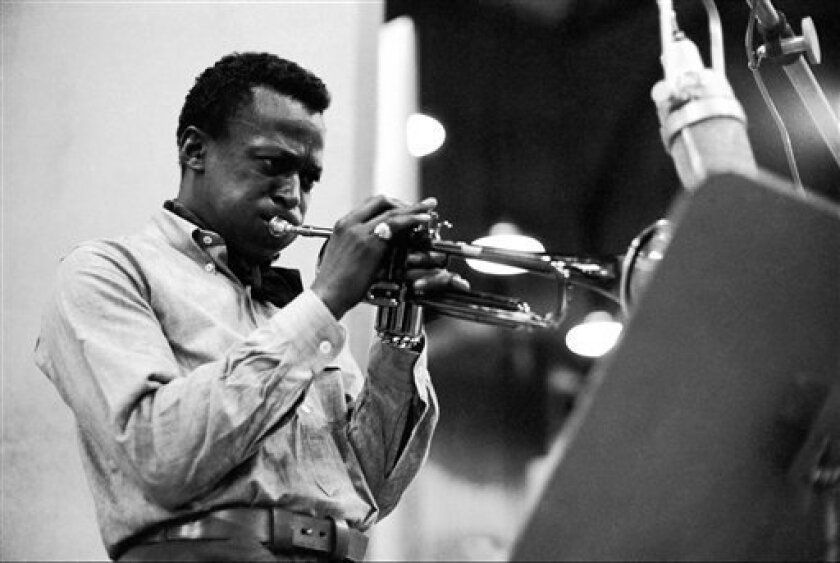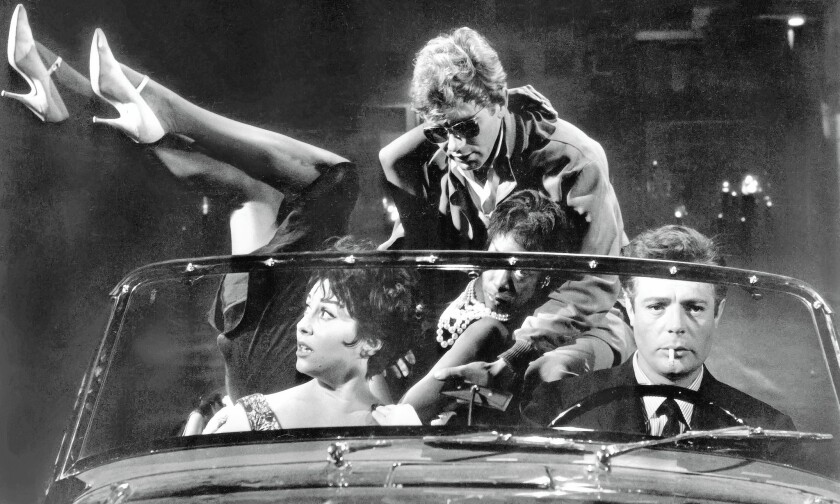By Dennis Hartley
(Originally posted on Digby’s Hullabaloo on April 27, 2021)

Good morning!
From The Guardian:
The systematic killing and maiming of unarmed African Americans by police amount to crimes against humanity that should be investigated and prosecuted under international law, an inquiry into US police brutality by leading human rights lawyers from around the globe has found.
A week after the former Minneapolis police officer Derek Chauvin was convicted of murder in George Floyd’s death, the unabated epidemic of police killings of Black men and women in the US has now attracted scorching international attention.
In a devastating report running to 188 pages, human rights experts from 11 countries hold the US accountable for what they say is a long history of violations of international law that rise in some cases to the level of crimes against humanity.
They point to what they call “police murders” as well as “severe deprivation of physical liberty, torture, persecution and other inhuman acts” as systematic attacks on the Black community that meet the definition of such crimes.
They also call on the prosecutor of the international criminal court (ICC) in The Hague to open an immediate investigation with a view to prosecutions.
“This finding of crimes against humanity was not given lightly, we included it with a very clear mind,” Hina Jilani, one of the 12 commissioners who led the inquiry, told the Guardian. “We examined all the facts and concluded that that there are situations in the US that beg the urgent scrutiny of the ICC.”
Just when you thought it couldn’t get much worse (from today’s Democracy Now )…
Outrage is growing in Philadelphia after explosive revelations that the University of Pennsylvania and Princeton University have been in possession of remains thought to belong to two children who were among 11 people killed in the 1985 police bombing of the Philadelphia home of the radical, Black liberation and anti-police-brutality group MOVE. We show an excerpt of a training video — now removed from the internet — by an anthropologist at the University of Pennsylvania and Princeton University who has been using the bones of at least one of the young bombing victims for the past 36 years — without the knowledge or consent of the families — and get response from a MOVE family member. “It makes you wonder: What else do they have?” says Mike Africa Jr., a second-generation MOVE member who grew up with the children whose remains have now been located. “What else are they covering up? What else are they lying about?”
Good God.
This development is particularly egregious if you know the details of the 1985 MOVE incident. And anyone from Tucker Carlson to your drunk uncle at Thanksgiving who tries to convince you that the increasing spotlight on these incidents is some kind of phony human rights crisis being ginned up by Lefties and/or the “liberal mainstream media” has never cracked open a history book. And now it seems that the whole world is not only watching, but judging. As any person with a conscience and a whit of humanity should.
For just a tiny fraction of that history, here’s my original 2013 review of the excellent “found footage” documentary that recounts the 1985 MOVE incident, Let the Fire Burn (currently streaming on iTunes, Apple TV, and Amazon Prime Video).
(Originally posted on Digby’s Hullabaloo on December 7, 2013)
Attack the block: Let the Fire Burn (***1/2)

While obscured in public memory by the (relatively) more “recent” 1993 Branch Davidian siege in Waco, the eerily similar demise of the Philadelphia-based MOVE organization 8 years earlier was no less tragic on a human level, nor any less disconcerting in its ominous sociopolitical implications.
In an enlightening new documentary called Let the Fire Burn, director Jason Osder has parsed a trove of archival “live-at-the-scene” TV reports, deposition videos, law enforcement surveillance footage, and other sundry “found” footage (much of it previously unseen by the general public) and created a tight narrative that plays like an edge-of-your-seat political thriller.
Depending upon whom you might ask, MOVE was an “organization”, a “religious cult”, a “radical group”, or all of the above. The biggest question in my mind (and one the film doesn’t necessarily delve into) is whether it was another example of psychotic entelechy. So what is “psychotic entelechy”, exactly? Well, according to Stan A. Lindsay, the author of Psychotic Entelechy: The Dangers of Spiritual Gifts Theology, it would be
…the tendency of some individuals to be so desirous of fulfilling or bringing to perfection the implications of their terminologies that they engage in very hazardous or damaging actions.
In the context of Lindsay’s book, he is expanding on some of the ideas laid down by literary theorist Kenneth Burke and applying them to possibly explain the self-destructive traits shared by the charismatic leaders of modern-day cults like The People’s Temple, Order of the Solar Tradition, Heaven’s Gate, and The Branch Davidians. He ponders whether all the tragic deaths that resulted should be labeled as “suicides, murders, or accidents”.
Whether MOVE belongs on that list is perhaps debatable, but in Osder’s film, you do get the sense that leader John Africa (an adapted surname that all followers used) was a charismatic person. He founded the group in 1972, based on an odd hodgepodge of tenets borrowed from Rastafarianism, Black Nationalism and green politics; with a Luddite view of technology (think ELF meets the Panthers…by way of the Amish). Toss in some vaguely egalitarian philosophies about communal living, and I think you’re there.
The group, which shared a town house, largely kept itself to itself (at least at first) but started to draw the attention of Philadelphia law enforcement when a number of their neighbors began expressing concern to the authorities about sanitation issues (the group built compost piles around their building using refuse and human excrement) and the distressing appearance of possible malnutrition among the children of the commune (some of the footage in the film would seem to bear out the latter claim).
The city engaged in a year-long bureaucratic standoff with MOVE over their refusal to vacate, culminating in an attempted forced removal turned-gun battle with police in 1978 that left one officer dead. Nine MOVE members were convicted of 3rd-degree murder and jailed.
The remaining members of MOVE relocated their HQ, but it didn’t take long to wear out their welcome with the new neighbors (John Africa’s strange, rambling political harangues, delivered via loudspeakers mounted outside the MOVE house certainly didn’t help). Africa and his followers began to develop a siege mentality, shuttering up all the windows and constructing a makeshift pillbox style bunker on the roof. Naturally, these actions only served to ratchet up the tension and goad local law enforcement.
On May 13, 1985 it all came to a head when a heavily armed contingent of cops moved in, ostensibly to arrest MOVE members on a number of indictments. Anyone who remembers the shocking news footage knows that the day did not end well. Gunfire was exchanged after tear gas and high-pressure water hoses failed to end the standoff, so authorities decided to take a little shortcut and drop a satchel of C-4 onto the roof of the building. 11 MOVE members (including 5 children) died in the resulting inferno, which consumed 61 homes.
Putting aside any debate or speculation for a moment over whether or not John Africa and his disciples were deranged criminals, or whether or not the group’s actions were self-consciously provocative or politically convoluted, one simple fact remains and bears repeating: “Someone” decided that it was a perfectly acceptable action plan, in the middle of a dense residential neighborhood (located in the City of Brotherly Love, no less) to drop a bomb on a building with children inside it.
Even more appalling is the callous indifference and casual racism displayed by some of the officials and police who are seen in the film testifying before the Mayor’s investigative commission (the sole ray of light, one compassionate officer who braved crossfire to help a young boy escape the burning building, was chastised by fellow officers afterward as a “n****r lover” for his trouble).
Let the Fire Burn is not only an essential document of an American tragedy, but a cautionary tale and vital reminder of how far we still have go in purging the vestiges of institutional racism in this country (1985 was not that long ago).
In a strange bit of Kismet, I saw this film the day before Nelson Mandela died, which has naturally prompted a steady stream of retrospectives about Apartheid on the nightly news. Did you know that in 1985, there was a raging debate over whether we should impose sanctions on South Africa? (*sigh*) Sometimes you can’t see the forest for the trees.


























